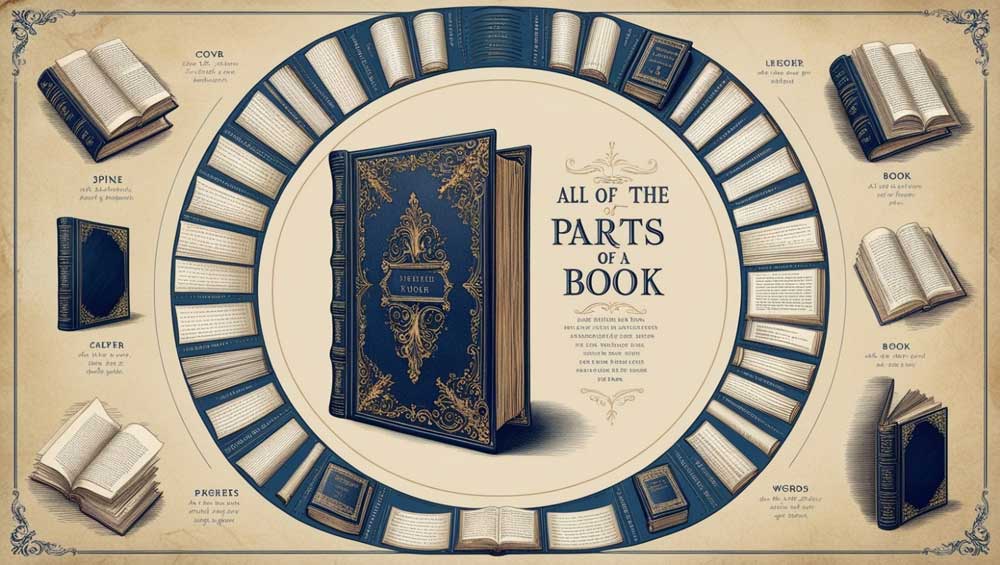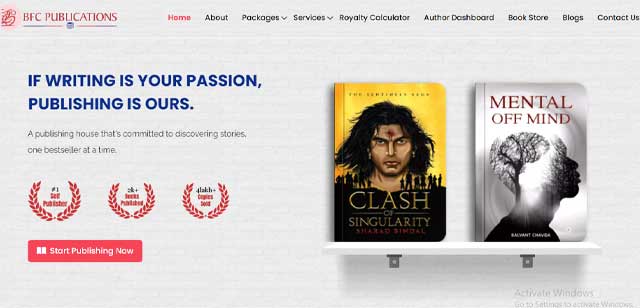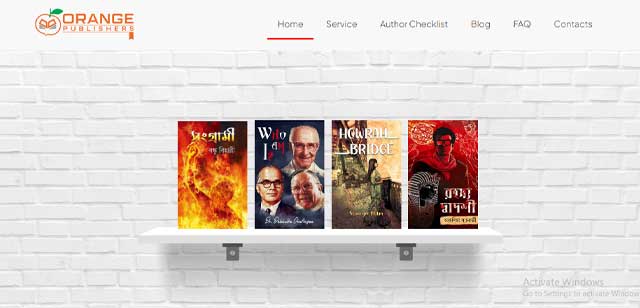Welcome to this interesting blog where we have a very unique proposition for you that you might have probably heard about.
We are going to talk about publishing a book anonymously and we are going to help you understand everything about it from its challenges to its benefits and primarily the reasons why it is a good idea.
We will dive deep into why authors actually choose to publish anonymously and whether you should do that as well.
The concept of publishing a book anonymously is quite amazing and actually very unique and while you might say that this has been done before, it’s done on very rare occasions and in fact, you might find this occurrence getting rarer by the day.
So, let us start this blog by understanding what is anonymous book publishing.
What Is Anonymous Book Publishing?
Anonymous book publishing is when an author chooses to not use their real legal name to publish a book and this is when they utilise what is called a pen name which is a made-up name to publish their works.
Anonymous publishing has been utilised by authors for centuries to publish their works and their different reasons for doing so.
Here are some of the most famous examples of authors with pen names that are more popular than their real names. You may find some of them very surprising.
Samuel Langhorne Clemens (Real Name) – Mark Twain (Pen Name)

Mark Twain fans are still surprised by the fact that his real name was Samuel Langhorne Clemens.
The reason why he chose a pen name was so that he could differentiate his identity and his occupation as a steamboat pilot from the author’s identity.
Eric Arthur Blair(Real Name) – George Orwell (Pen Name)

George Orwell is revered throughout the world for his exceptional takes in his politically charged novels 1984 and Animal Farm.
However, most of his fans do not know that his actual name is Eric Arthur Blair and the reason for the pen name is simply because he did not want his family to know of his politically charged writings.
Mary Ann Evans (Real Name) – George Eliot (Pen Name)

We have probably read at least one George Eliot novel and we have probably loved it. It is a well-known fact that the real name of George Elliot is Mary Ann Evans.
Mary used the name George Eliot simply because she wanted to avoid the stereotypes of female writers during the time period she wrote in and she wanted to be taken as seriously as a male novelist.
Isaac Asimov (Real Name) – Paul French (Pen Name)

We finally have an example of an author popular by real name using a pen name to write a different series of books.
Yes, we are talking about Isaac Asimov using the name Paul French to write the Lucky Starr series as he did not want his regular readers to confuse this series with his other works.
Charles Lutwidge Dodgson (Real Name) – Lewis Carroll (Pen Name)

Lewis Carroll was actually a mathematician and his real name was Charles Lutwidge Dodgson.
The reason why he used a pen name is simply because he wanted more freedom to express his whimsical ideas about his magical worlds without it having any effect on his mathematical career.
J.K. Rowling (Real Name) – Robert Galbraith (Pen Name)

We now have one of the most recent examples of an acclaimed author who is more famous by her real name using a pen name to avoid bias from the public.
Yes, we are talking about J.K. Rowling using the name Robert Galbraith to write the series The Cormoran Strike. She wanted to have a fresh perspective on her work and wanted people to judge her work for its worth.
She used a pen name because she did not want people’s judgment about her new books to be clouded by her Harry Potter fame.
We are going to talk more about the reasons later on and there are definitely quite a few important reasons why authors do it but we must understand the practical of it.
Publishing your book anonymously is not only easy but also very practical because the publisher always stays in the loop regarding the publishing information.
While this might be difficult to do with a publishing services company like Amazon but you can very easily achieve anonymous publishing with a pen name through any traditional legacy publishing company.
However, if you want to publish your book anonymously without the knowledge of the publisher then it is going to be a very difficult process because authors have to sit face-to-face with the publishing company in order to finalize the important details regarding a publishing contract.
While this might be possible if the author chooses to only communicate online and be a little bit more flexible with the contracts but most traditional publishers will not agree to this.
Reasons To Publish Anonymously
For Personal Safety

We are sure you definitely understand that literature is not just amusement as it is one of the most powerful forms of resistance.
Sometimes there are powerful kings and powerful governments that do not want the world to know about the bad things they do.
Sometimes it is very difficult to write about these bad things with your own name especially if you belong to that kingdom or country.
That is why one of the most commonly used forms of resistance in literature is anonymity where the author chooses to stay anonymous and use a pen name to publish their works.
This is to highlight things that are happening in the country without getting identified.
This kind of situation is not just applicable for political reasons but also social reasons or any other kind of reasons where the safety of the author is at stake if they decide to write with their real name.
For Avoiding Bias

The second reason we are going to talk about used to be one of the most common reasons why authors decided to not use their real names during publishing.
In order to understand this, we must understand the times that this happened. If you consider any time before the 1950s then it was very difficult for women to have a voice of authority or respect in the world of literature.
This was also due to the fact that society was very different and equality was a rarity in those times.
If you were a woman in the 18th or 19th century or even later on and if you decided to publish your novels under your real name then it would be very difficult to get them published and even if you got them published then it would be very difficult to get them sold or taken seriously.
This is because the readers of that time did not consider the opinions of women valid enough to be read in literature and we need to understand that this idea comes from a lineage of primarily male writers starting from ancient Greece.
In a situation like that if you wanted to get noticed and attain critical acclaim just through the merit of your work and not through your gender then you had to publish as a male in order to avoid bias.
This can be for any other kind of reason as there are enough examples out there to show how black authors decided to utilise more Caucasian names in order to publish books during the Jim Crow era etc.
For Maintaining Privacy

One of the other reasons is simply privacy and there is no other reason bigger than privacy.
You might be an author and you simply might not want your personal details to go out into the public but you also have a passion for writing books and you want your ideas to come out into the world in a way in which people do not know who you are.
You might be someone who understands today’s world is much more dangerous when it comes to things like identity theft and privacy-related violations and that is why you simply do not want your information to be out there in public.
In a situation like that you can definitely choose to publish anonymously and all you have to do is mention this to your publisher.
For The Creative Freedom

Putting aside all the other reasons why anonymity is important during publishing, this is one of the reasons that it also cannot be ignored.
Anonymity is fun and it is a very liberating experience full of freedom to do whatever you want and say whatever you feel like.
If you want to experience the ultimate level of freedom in expressing your thoughts without anyone questioning who you are, what you believe in or even your background or expertise then you can choose to be anonymous in publication.
This can provide you with a deep sense of creative freedom that is not possible if you publish by your real name but you must make sure to draw up a Non-disclosure Agreement (NDA) with your publisher that they cannot legally reveal your name.
For A Reality Check

If you are already a very popular author and you do not want to cloud the judgement of the readers of your new works with the fame and recognition of your past works then you can choose to publish anonymously.
This is the best thing to do if you want to distance yourself from your older works. Most authors usually do it if they want to explore new topics or new genres.
However, the problem with this is that the name carries authority and weight in the market. That is why you might not receive the same level of attention that you usually get with your real name if you decide to use a pen name in the market.
But if you are someone who just wants your work to be judged by its own merit and not the merit of your past fame and if you want a reality check on your work without the support from your already market-established name then you can definitely try out anonymous publishing.
Challenges Of Anonymous Publishing
Getting The Right Publisher

One of the complications you might face with anonymous publishing is that it will be difficult to do it with a publishing service which we call as online publishers.
We are talking about the likes of Amazon and other kinds of online publishing services that are pretty popular these days.
The problem with these publishers is that you will need to publish it under your own name and you cannot use things like pen names in order to publish.
Even if you decide to not go with these kinds of publishers and you decide to publish with a traditional publisher then again you might face problems.
This is because not every publisher is going to entertain this idea and there is a solution to this which we are going to talk about at the end of this blog.
Legal And Copyright Issues

The other complicated thing about anonymous publishing is that you might face legal issues if you do not do the paperwork correctly.
This is because although you are using a pen name to publish your works, in order to publish your works, you will need to file the copyright properly and the copyright should be under your legal name or real name.
This is not really an issue if you go with a reputable publishing company that understands the process and is genuine enough and also reliable enough to be doing this for a long time.
That is why you should always choose a publishing company with experience in anonymous publishing and you are never going to have any problems with this kind of publishing arrangement.
Existing Market Support

If you are already a successful author and you are just trying to find out how the market is going to react to something new you want to experiment with, you might choose anonymous publishing.
If you are someone who already has a well-established name in an industry but you want to choose anonymous publishing then you might face a challenge.
You are not going to get that same level of market recognition that you might get if you utilised your popular name.
You do not have to be a published and popular author to have a market presence because you can be a public personality or someone who is an expert in any field.
If you decide to go with anonymous publishing then you are simply going to waste that name authority potential that you might have gotten if you used your real name.
Using your real name can give you a head start and a considerable push that can actually be the deciding factor in the market.
Risk Of Exposure

Finally, we have the risk of exposure and this is a very real risk because it has happened to the likes of J. K. Rowling and other popular authors.
Authors think they have covered their tracks regarding anonymity and they plan their anonymity quite well but still, things get revealed sometimes.
If you are someone who is already established in the world of literature and you want to publish anonymously then it might be very difficult to keep a secret in today’s digital age.
While you can go after the person who has revealed your identity and that might result in a win in the courts but you are still going to have your identity leaked and it is not worth the risk sometimes with anonymous publishing when the stakes are high.
So, Should You Publish Anonymously?
Publishing anonymously is a very unique concept and you should definitely give it a try but you must understand one thing.
You must only do it if you have an actual reason for doing it because if you do not have a legitimate reason for doing it then you are simply going to go through unnecessary trouble which might be avoided.
This means if you are someone who is at a real physical danger in publishing with their real name then by all means you should go with anonymous publishing.
If you are someone who just wants to test out the potential of their work without the baggage of the previous work then you can go with anonymous publishing.
If you are someone who values freedom and liberty and you do not want to associate your real name with your thoughts and ideas and you just want to set out your thoughts into the world then you can go with anonymous publishing.
We hope this blog has been helpful for you to understand what is anonymous book publishing and we also hope you now understand the benefits as well as challenges and reasons for anonymous publishing.
The concept of anonymous publishing is very unique and if you want to explore this amazing concept and you are looking for the appropriate publishing company with extensive experience in anonymous publishing then we are here for you.
We are Orange Publishers and we are a legacy publishing company with extensive experience in nearly every kind of publishing type including anonymous publishing.
We will help you with the entire process of anonymous publishing and we will even help you in the pen name selection process if you want us to.
In addition to that, we also will help you with all the legalities of anonymous publishing including copyright registration and everything else you want us to do, and, just for peace of mind, we will also sign all the NDAs you want us to sign for privacy integrity.
We welcome you to visit our website and check out everything we do regarding publishing.






















































































































